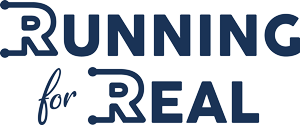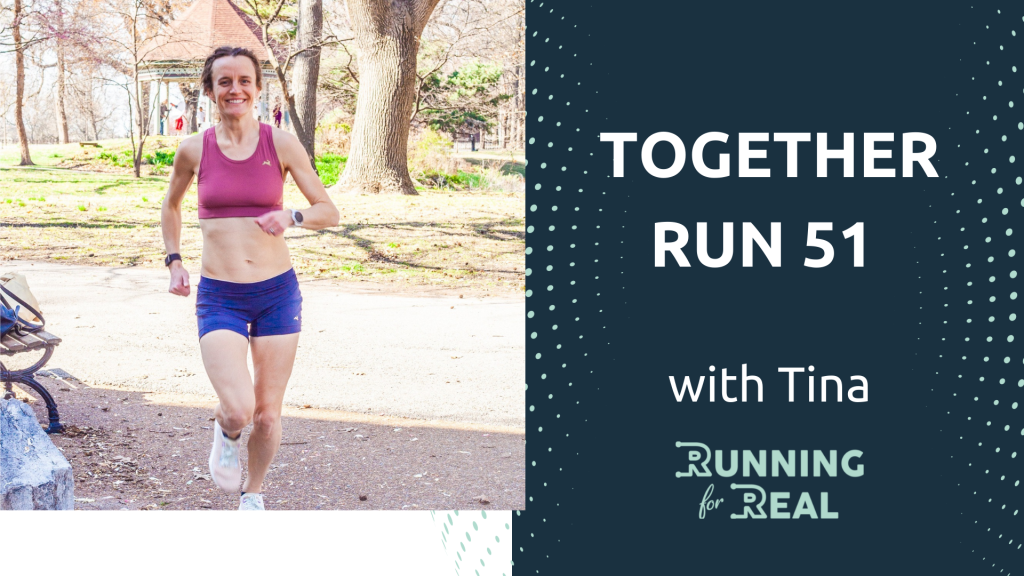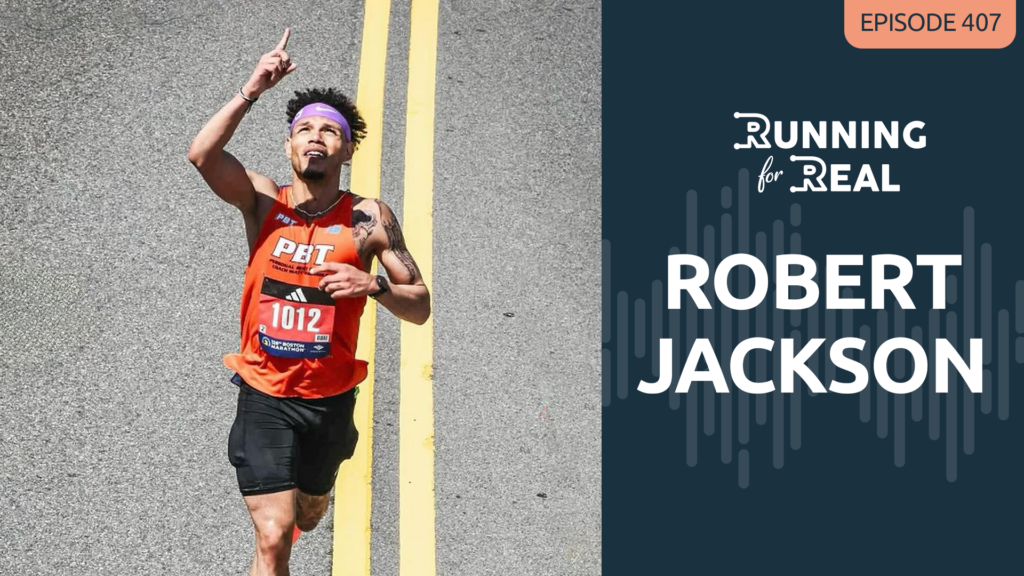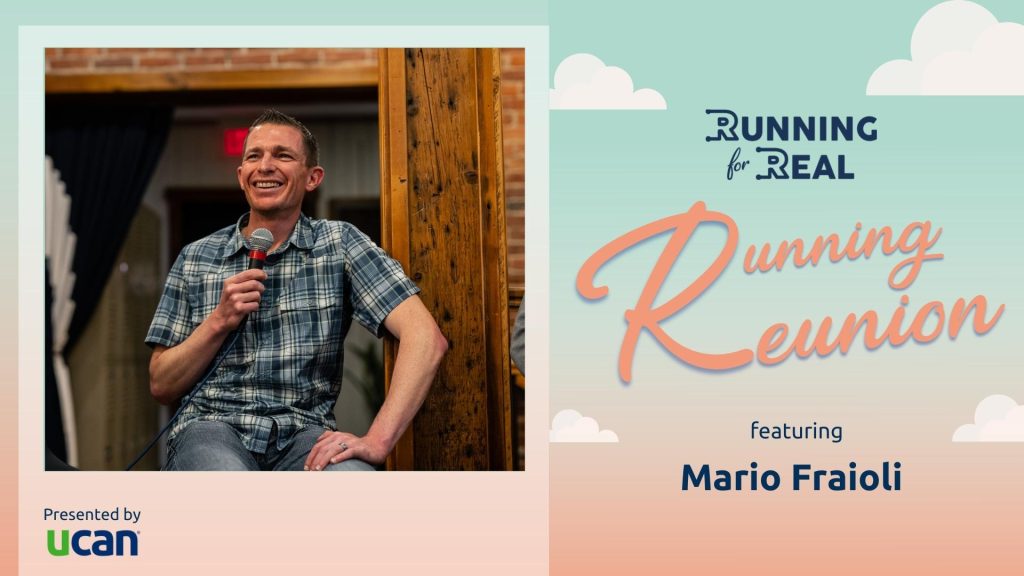In the documentary 26.2 TO LIFE, Rahsaan “New York” Thomas inspired audiences as he trained to run a marathon behind the walls of San Quentin Prison. He wasn’t only preparing for a race; he was working to become the best person that he could be, even though he knew that he might never go home. He became an acclaimed journalist; producer of the Pulitzer Prize-nominated podcast, Ear Hustle; and Executive Director of Empowerment Avenue, a nonprofit established to normalize the inclusion of incarcerated writers and artists in mainstream venues.
Listen to the Running for Real podcast here:
Apple (iTunes) Podcast | Sticher | Castbox | Overcast | Spotify | Google Play | iHeartradio |
Rahsaan was already a runner when he was sentenced to 55 years and six months to life for a second degree murder conviction and other charges and entered San Quentin. “I see these guys grouped up, these volunteers,” he recalls. “I’m like, ‘What’s going on over there?’ They said, ‘If you sign up, you get free sneakers. You get to hang out with these people in the street.’ I’m like, ‘Well, I’m running anyway, might as well run with y ‘all.’ And so I just changed my running schedule to come out Monday nights, run with the crew. And they gave me Adidas. So it became my favorite running club.”
The running club was the 1000 Mile Club, organized to provide its members with the opportunity to experience the rewards of long-distance running. Rahsaan could comfortably run 8-10 miles, but beyond that, he says, “parts of my body start complaining, like, ‘Why are we doing this? What is this about?’” Still, when he decided to run the San Quentin Prison Marathon, 105 laps around the prison yard, there was never any doubt in his mind that he would finish.
“There was one point when I was like, ‘Nah, I’m not gonna quit. I’m gonna go harder.’ And I was digging in and running as hard as I could. That’s probably like the 17 mile mark, and I’m going hard. I’m like, ‘Yeah!”, then I’m hearing “Rocky” in my head. And this chubby guy just walked past me. I was like, ‘What the hell? I’m running my hardest here.’ My legs were so cramped up that I felt like I was flying, but I was not moving very much at all. The guy walking walked faster than me.
“At that point I was like, ‘Man, what am I doing?’ But the cameras were rolling. I had been talking a lot of junk about P. Diddy, about ain’t no way a guy from Mount Vernon is tougher than me. And if he ran a New York City Marathon and I’m a hardcore incarcerated person, I know I can do it.
“So that was all out there, and I’m really one that tries to keep my word at all times. I play with a level of integrity, even if it’s against me. So I had to finish; I had no choice. And then there were two guys; my last three or four miles, they started running with me when it was empty out there, when there was no other runners on the track, everybody else was finished in their cell after they showered and had eaten, and I’m still on like mile 20 or something. And so they came and helped me out.
“Then even some of the coaches started running with me. And so that helped me get through the hardest part. The hardest part is the last few miles. But when you’re at those last few miles, you’re at this point where you really feel like you can’t run another step, but you came too far to quit. You never want to be the person that did what, 24.2 miles? You know what I mean? If you do 24.2 miles, you wasted 24 miles, right? You have to finish at that point.”
Rahsaan came in last of the thirteen runners who finished, but there were far more runners who didn’t finish at all. “So that was a big deal,” he says. “It turned out to be very inspirational because the next year, 20 something people finished. They’re like, ‘If this little mother sucker could do it…’ People felt like they can beat my time. So I gave them a target. I gave them hope. And for me, to just finish a marathon, if you can do that, you can do anything, because I talk to all the elite athletes and they all say the same thing, no matter how much great shape you’re in, at some point a marathon just hurts and it’s just grit and determination. So if you can get through that, you can get through anything.”
Rahsaan’s sentence was commuted by the governor, and after his release, he ran the New York City Marathon. “It was a dream come true. I said if I ever got out, I want to walk from Brooklyn to Harlem. And me and Claire [Gelbart, a journalism teaching assistant at San Quentin] had made a deal too. We talked about running the New York City Marathon when I got out. Then I really got out, and so we really had to run it. You know, I keep my word. So Claire held me to it. We turned it into fundraising for Empowerment Avenue to give it some more substance.”
Empowerment Avenue currently works in 28 prisons, across 14 states, where they have at least one writer, filmmaker, or artist. “We take their work and we get out to society and we get them, the artist and the writer specifically, we get them paid for their work,” Rahsaan explains.
“We got people placed in the New York Times, for Christ’s sake. We got people with solo gallery exhibits. And so we’re able to do that.
“But the public also gets to see the other side of the story. And I always say, when the law changes, it changes for everybody. We only have like sixty people that are enrolled in Empowerment Avenue right now, but they all make a public difference, right? Their stories move the public to think differently. And we focused on getting them published in spaces you wouldn’t expect to see us, and there are becoming less and less of them because we have writers in place everywhere, magazines everywhere. That’s one of the things I do that I really love because we have narrative change happen at the same time as economic empowerment.
“The next thing I’m trying to do is something similar. I’m doing a San Quentin Film Festival at San Quentin State Prison. I’ve been blessed by the administration to allow me to come back and do that. And the importance of that to me is to create opportunities for returning citizens who are filmmakers to go right into the industries and come home to the resources they need. One of the things we’re trying to do, and use the Film Festival to launch it, is a returning filmmaker fund so they can go right into their film career. You want to go to film school, you want to make a film, you want to buy the equipment, you have the resources you need to not worry about anything else. And the reason why it’s important to invest in these exceptional filmmakers is the stories they tell will have an impact on the whole system. Saving them would save a bunch more people.”
Empowerment Avenue Films’ documentary, Friendly Signs, is the story of Tommy Wickerd’s struggle to start a sign language class in San Quentin. Tommy ran the San Quentin Prison Marathon with Rahsaan, but unlike Rahsaan, is still in prison, where he is determined to use his time to serve the deaf community. Written, directed, and produced by Rahsaan, it will be screened at the the New Parkway Theater in Oakland, CA on September 24.
Resources:
Thank you to HydraPak, AG1, and Runna for sponsoring this episode.
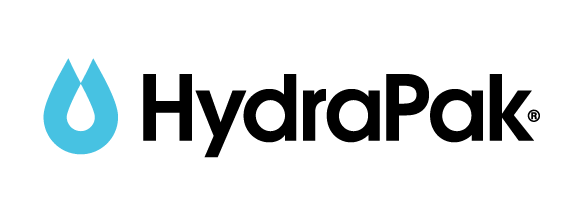
HydraPak is continually looking for ways to help runners and their communities lessen their environmental footprint. Their reusable hydration products are aimed not only at supporting athletes in pursuit of their personal goals, but at reducing single-use waste.
Most recently, they unveiled their Cupless Racing Partnership Program, designed to support trail and road races across the country in eliminating race day waste by offering their collapsible and reusable SpeedCup as an alternative to single-use cups at running events.
You can find out more here. Use code TINAMUIR 10 for 10% off your purchase!
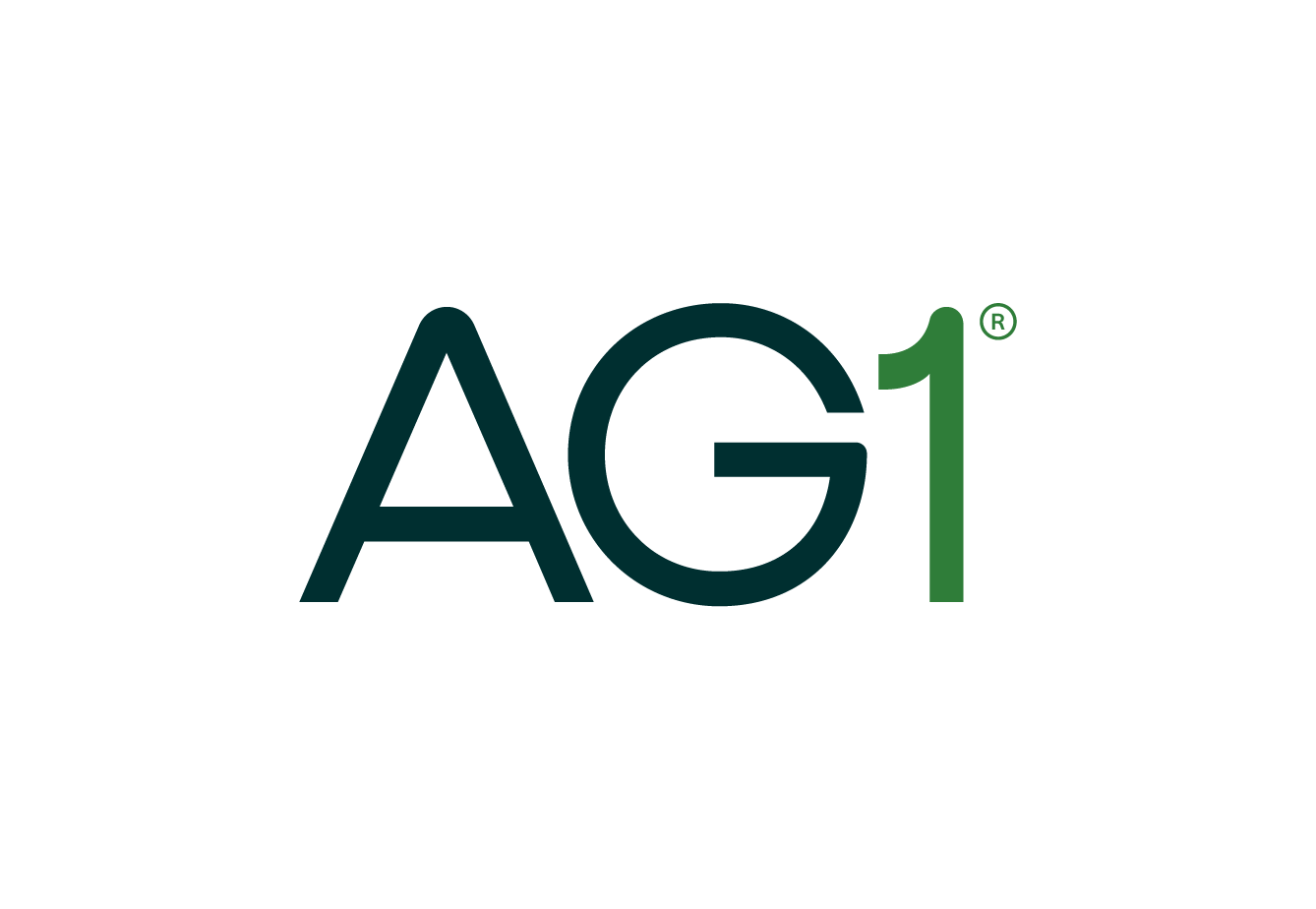
AG1 is a foundational nutrition supplement that delivers daily nutrients and gut health support. Unlike so many products, the entire formula is backed by research studies, not just the ingredients. AG1 is packed with a variety of nutrient-dense ingredients and is the perfect complement to a healthy diet.
It’s easy and satisfying to start your journey with AG1. Try AG1 and get a FREE 1-year supply of Vitamin D3K2 AND 5 free AG1 Travel Packs with your first purchase here.

Runna is on a mission to make running as easy, effective and enjoyable as possible by providing personalized running plans built by Olympic athletes and expert coaches. They have plans for runners of all abilities, from Couch to 5K to elite level, and offer strength, mobility, and Pilates plans to integrate with your running. They even have a community section on the app, where you can connect with like-minded runners.
There’s a reason why they’re the #1 rated running app in the world – go here and use code RUNNINGFORREAL to get two weeks free!
Thanks for listening!
If you haven’t already, be sure to subscribe on Apple, Spotify, iHeart, YouTube, or wherever you get your podcasts. And if you enjoy Running for Real, please leave us a review!
Keep up with what’s going on at Running for Real by signing up for our weekly newsletter.
Join the newsletter
This is not your usual email newsletter. With Tina’s personal reflections and recommendations, suggestions of things to do, thoughts to contemplate, and some updates, this newsletter is one that you’ll WANT to read, not hit “delete” as soon as you see it.
Follow Tina on Instagram, Facebook, and X. You’ll find Running for Real on Instagram too!
Want to be a member of the Running for Real community? Join #Running4Real Superstars on Facebook!
Subscribe to our YouTube channel for additional content, including our RED-S: Realize. Reflect. Recover series of 50+ videos.
Thank you for your support – we appreciate each and every one of you!
